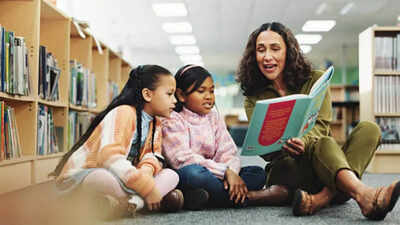ARTICLE AD BOX

Unlocking the secrets of history for kids is simpler than it seems! Embrace the power of storytelling to turn boring dates into thrilling tales, utilize imaginative visuals such as graphs or infographics, and engage them with hands-on experiments related to history.
Helping children remember historical facts can be a challenge for many families. With dates, names, events, and timelines to juggle, students often struggle to keep everything straight.
But experts say that with the right strategies, history can become one of the most enjoyable—and memorable—subjects. Here are five simple tips that can help your child build stronger recall while developing a deeper appreciation for the past.
Turn facts into stories
Educators agree that the human brain remembers stories far better than isolated facts. Instead of presenting history as a list of dates and names, parents can help children connect events into meaningful narratives.
For example, rather than memorizing “The Wright brothers invented the airplane in 1903,” frame it as a story of two curious brothers who constantly tinkered, failed, rebuilt, and eventually changed the world.
When children can visualize events, they not only remember them better—they understand them more deeply.
Use visual aids and timelines
Visual learning tools remain one of the most effective methods for strengthening memory. Timelines, charts, maps, and even simple drawings can help children see how events relate to each other.
Posting a timeline on a bedroom wall or study area allows kids to revisit information repeatedly without feeling as though they’re studying. Visual cues also help break down large historical periods into manageable segments, making it easier for children to grasp cause-and-effect relationships.
Make history hands-on
Research shows that children retain information better when they experience it actively. Parents can turn lessons into hands-on activities by building miniature landmarks out of household materials, acting out historical scenes, or visiting local museums and historical sites.
Even small activities—like cooking a recipe from a particular time period or creating a simple “artifact”—can help anchor historical facts in a child’s memory.
These experiences spark curiosity and create emotional connections to the content, making recall much easier.
Connect the past to the present
History becomes far more memorable when children see how it relates to their own lives. Whether discussing how ancient civilizations influenced modern governments or how past inventions shaped today’s technology, parents can help kids draw parallels between historical events and the world around them.
These connections make facts feel relevant, turning abstract information into something meaningful. When history feels alive, children naturally remember more of it.
Encourage regular review in small doses
Cramming rarely leads to long-term retention, especially for younger learners. Instead, experts recommend brief but consistent review sessions. Parents can help by creating simple flashcards, playing trivia games, or having short conversations about what the child learned that week. Repetition strengthens memory pathways, and spreading review over time reduces pressure while boosting confidence. Even five minutes a day can make a noticeable difference.

 12 minutes ago
4
12 minutes ago
4









 English (US) ·
English (US) ·